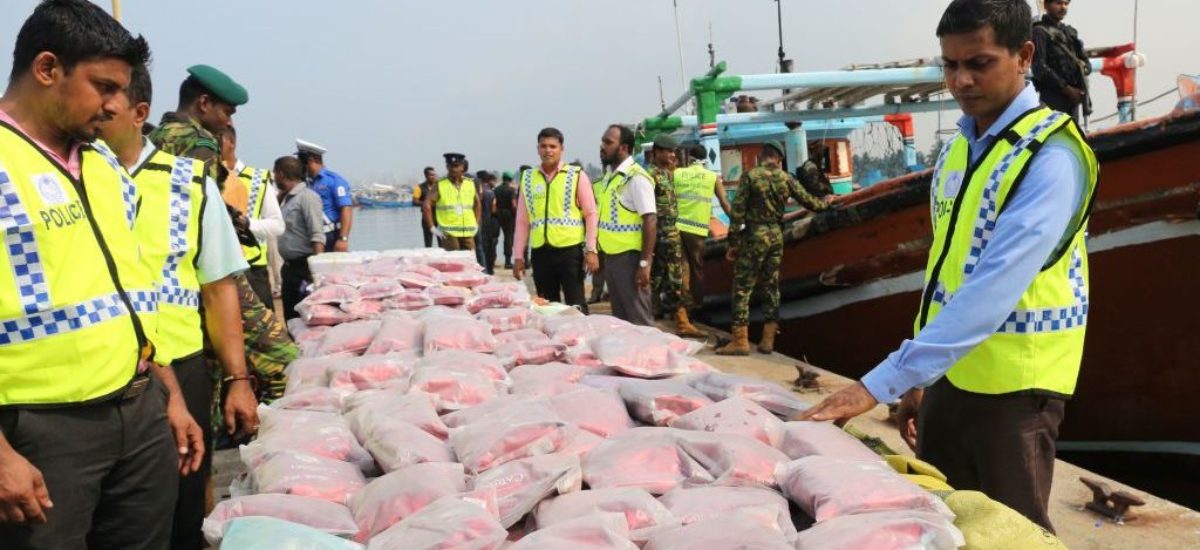Photo courtesy of Eastern Eye
Drug abuse is a menace that many societies are attempting to come to grips with. There has been a global rise in the number of drug users while accessing the substances has become easier with time. Substance abuse not only affects the individual but also his or her community and the wider society. While there are efforts to raise awareness on the menace of drug abuse in Sri Lanka, there have been few attempts to understand the root causes. In the post war Northern Province, the prevalence of drug abuse is significantly high.
According to the former Minister of Health of the Northern Province, Dr. P. Sathyalingam, there is a relationship between the increasing use of illegal drugs by the residents of former conflict zones and wider socio-political problems such as disappearances, missing relatives and abject poverty.
Evidence of the increasing use of drugs in the Northern province is the demand in terms of consumption and the related arrests related. According to the Handbook of Drug Abuse Information 2020 released by the Ministry of Defense, drug related arrests in the Northern Province were 1,622 in 2018 and 1,753 in 2019. Drug related arrests of people of Tamil ethnicity increased from 8.4% in 2018 to 9.5% in 2019 despite a 10% reduction in the overall number of drug related arrests in 2019. Many cases go unreported or have resulted in a long drawn out process, especially due to the language problem because 95% of the police in the North are Sinhalese, without fluency in Tamil.
Another source of evidence is the supply of illegal drugs. On April 25 this year, four suspects were arrested in Jaffna with seven kilograms of crystal methamphetamine, or ice. Within a period of 10 days, the police recovered 135 kilograms of ice in the province. These illegal drugs are brought from South India, specifically Kerala and sold in Jaffna, often in collaboration with those in authority.
As Barry Buzan pointed out in his book People, States and Fear: An Agenda for International Security Studies in the Post Cold War Era, “The outcome of history leaves a pattern in which states and societies frequently do not fit together comfortably”. This kind of discomfort leads to the eruption of various social issues. For instance, the discrimination and marginalization of the Tamil community through the denial of language rights and denial of equal access to education and employment created an environment that led to the radicalization of Tamil youths.
In the same way that it is impossible to find a meaningful solution for the country’s ethnic conflict without addressing the root causes that led to it, it is also impossible to find an answer to the drug menace through punitive and carceral measures that do not pay attention to reasons for the problem.
The youth, especially the unemployed youth, are the most impacted. The Jaffna District Fisherman’s Federation President, Naganathy Ponnambalam, said that residents of Jaffna and Vavuniya complained that Kerala ganja, or cannabis, is attained with ease because it is sold even in small retail shops. Young children have taken to the drug dealing business. The source of money to purchase drugs? Inward remittances.
I spoke to a young man from the Northern Province, who I will call Sarusan, who became an addict at 27. “I use it to distract myself from evil thoughts,” he said. Sarusan was conscripted by the LTTE at a young age and was forced to participate in the war. His father died during the war while his mother lost a leg. “I want to forget; a little sniff, swallow or needle is just the thing. I feel lonely without my father and I am expected to handle everything around the house as well as to bring in money. Where is the time to grieve?” he asked.
He did not want to seek psychosocial support. “I have lost many things in my life but I am not crazy for someone to check my thoughts,” he said. Sarusan is just one of many young people in the same situation.
A doctor from a rehabilitation centre in Jaffna who wished to remain anonymous said, “They are kids. Perhaps they fell in with the wrong crowd or just had fewer opportunities.” Addicts are brought in by family members and forcibly taken in for treatment. “They do not self-admit because they do not see it as a problem; it would be easier to treat them if they did not resist,” the doctor said.
In a context where people have experienced and, in many ways, continue to experience so much loss, violence, trauma and discrimination coupled with structural issues such as poverty and income inequality, illegal drugs have become a vehicle to banish these worries even just for a moment. Having property destroyed and physical disabilities coupled up with mental trauma, many members of the community find it difficult to commit to finding and keeping a job. The stigma and misconceptions surrounding mental wellbeing that haunt the society are keeping people who need counselling services the most away from them. As a result their reliance on drugs and alcohol to numb their worries is much higher.
Marginalization, discrimination, trauma, loss, stigma, drug smuggling, drug dealing, poverty, inequality, inward remittances and language issues all play a role in the high drug consumption in the Northern Province. Substance abuse is linked to deeply personal and intimate experiences of trauma and helplessness as well as wider social issues such as human rights, income inequality and equitable access to social services.


